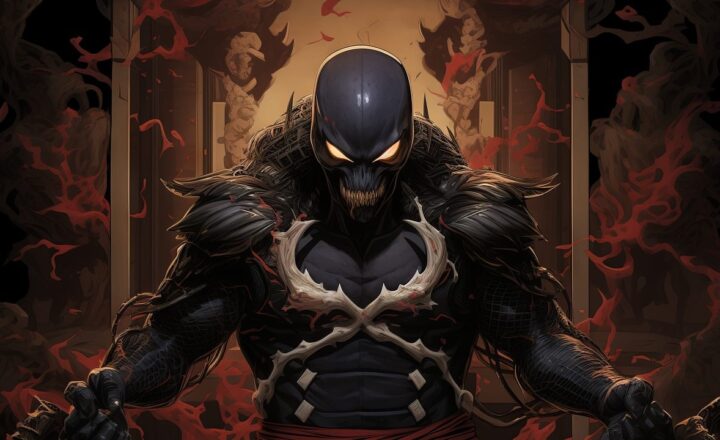The Rise of Female Superheroes: How Women Are Leading in Comics and Movies
November 16, 2024

The landscape of comics and movies has undergone a revolutionary transformation over the last decade, with female superheroes taking center stage in ways previously thought improbable. From the pages of comic books to blockbuster films, women are not only stepping into roles traditionally dominated by men but are often redefining what it means to be a hero. This article delves deep into the rise of female superheroes, exploring their impactful journeys, influence in pop culture, and the significance of diverse representation in storytelling.
1. A Historical Perspective: The Birth of Female Superheroes
Female superheroes first appeared in comic books during the Golden Age of Comics (1930s-1950s), with characters such as Wonder Woman making her debut in 1941. Created by William Moulton Marston, Wonder Woman emerged as an icon of female empowerment, challenging societal norms while promoting justice, equality, and peace. In a time when women had limited visibility in media, she became a powerful symbol of the feminist movement over the decades.
Although Wonder Woman paved the way, female superheroes often found themselves relegated to the background, with male counterparts overshadowing them. However, comic book publishers increasingly recognized their potential, which led to the introduction of more complex female characters, such as Batgirl, Storm, and Black Widow, throughout the 70s and 80s.
2. The Evolution of Female Superheroes in the 21st Century
The 21st century marked a turning point for female superheroes in popular culture. With the boom in superhero films and the comic book renaissance, studios began to recognize and capitalize on the demand for strong female characters. The successful integration of these heroes into major franchises has significantly changed the portrayal of women in comics and film.
Key factors contributing to this evolution include:
- Diverse Storytelling: Female superheroes are now presented in diverse narratives that explore their backgrounds, struggles, and triumphs, resulting in more relatable and nuanced characters.
- Talented Creators: Female writers, directors, and artists are making their mark in the industry, bringing their perspectives and experiences to superhero stories, which leads to culturally rich narratives.
- Cultural Shifts: Societal changes and increasing advocacy for equality have brought female representation in media to the forefront, pushing publishers and studios to reevaluate their approach to character creation and storytelling.
3. Iconic Examples of Female Superheroes in Cinema
Several notable films have successfully featured female superheroes in leading roles, proving that audiences crave stories grounded in female strength and resilience:
– Wonder Woman (2017): Directed by Patty Jenkins, this film portrayed Diana Prince’s journey from a sheltered Amazonian warrior to a global symbol of hope. The movie’s success challenged stereotypes and showcased a superhero story rooted in compassion and morality.
– Captain Marvel (2019): Featuring Brie Larson as Carol Danvers, this film explored themes of identity, strength, and bravery. It was particularly notable for its box office success, proving that audiences are eager to see female-driven superhero stories.
– Black Widow (2021): The long-awaited solo film for Natasha Romanoff, played by Scarlett Johansson, explored her complex backstory and redemption arc, solidifying her importance within the Marvel Cinematic Universe (MCU).
These films have not only provided representation but also empowered women and girls to see themselves as capable heroes in their own lives.
4. The Impact of Female Superheroes on Society
The rise of female superheroes has profound implications beyond entertainment. They serve as role models for empowerment, resilience, and strength for individuals of all ages. Young girls, in particular, are now presented with an array of heroic figures to aspire to, nurturing a generation that embraces individuality, courage, and ambition.
Moreover, these characters have sparked discussions about representations in media and culture. With stories centering on issues such as body image, equality, and mental health, female superheroes invite conversations that challenge stereotypes, advocate for social justice, and encourage audiences to reflect critically on the world around them.
5. The Road Ahead: More Female Heroes on the Horizon
The future looks promising for female superheroes, with upcoming films and series slated for release featuring strong female leads. Projects such as the upcoming series centered on Ms. Marvel and the anticipated sequel to Wonder Woman highlight the ongoing commitment to showcasing diverse characters and stories.
Additionally, comic book publishers are increasingly prioritizing female representation in their storylines, exploring themes of intersectionality and social justice. This not only enriches the narrative landscape but also sets the stage for the next chapter of superhero tales.
Conclusion: Celebrating Female Superheroes
The rise of female superheroes in comics and movies reflects a broader cultural shift toward inclusivity, representation, and empowerment. As these characters continue to inspire audiences worldwide, they challenge the status quo and pave the way for future generations to redefine heroism. Celebrating female superheroes is about embracing diversity in storytelling and recognizing that anyone can wear a cape and save the day.
As we look to the future, it’s vital to support and celebrate the creators behind these stories and advocate for continued representation. The journey of female superheroes is just beginning, and their impact on popular culture will only grow stronger.
Thus, in breaking the barriers and reshaping the hero narrative, female superheroes are leading the charge toward a more inclusive and diverse future in entertainment.






